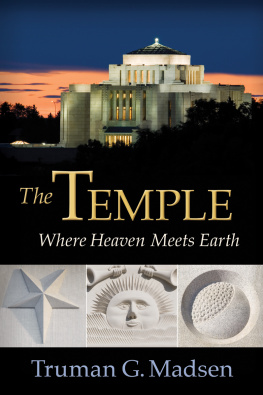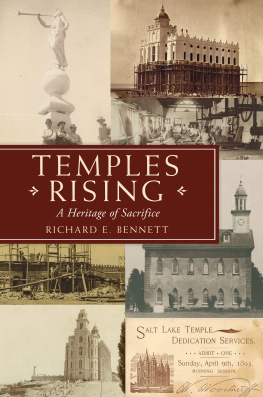This book is dedicated to a countless amount of people that have helped me along the way. In particular, I would like to thank David Mason who has helped answer any and all questions I might have had. I would also like to thank Andrew McLeod who endured the first few edits of the book. Also, I would like to thank Chris Ellzey who suffered through a countless amount of edits and revisions. More personally, I would like to thank my parents who instilled a sense of adventure and wonder in me at an early age. And finally, and most importantly, I would like to thank my wife who encouraged me to write this book and was a co-adventurer on a lot of these temple trips.
1. Introduction to Busan
Beautiful Busan

A Map of Busan
The beautifully situated city of Busan, with its picturesque beach fronts and surrounding mountains, Busan is the second largest city in South Korea. Amongst this natural beauty is an urban sprawl that spreads out through the narrow valley corridors below the neighbouring peaks of towering mountains. With its close proximity to the sea, as well as Japan, Busan has a long and occasionally harsh history. The citys eventful, in combination with a gorgeous cityscape by the sea, has resulted in some of the most beautiful temples and hermitages in South Korea.
Busan, with a current population of 3,600,000, gets its name from a nearby mountain. The mountain behind the port was previously called Mount Busan for its shape, with Bu in Korean meaning cauldron and san meaning mountain, but is presently referred to as Mount Jeungsan. The name Busan has been used since the 15 th century. Busan today is a major centre for domestic and international trade, transport, education, and commerce.

A Picture from Seomyeon
Busan is situated on the southeastern most portion of the Korean peninsula, and it lies at the same latitude as Tokyo, Los Angeles and Beirut. The city is surrounded by Gyeongsangnam-do Province, as well as the Metropolitan City of Ulsan, Koreas seventh largest city.
The area of Busan is roughly 767.35 km2 and includes 15 administrative districts, with the most populated being the famous beachside community of Haeundae-gu. This part of the city has a population of 429,000 people with the largest area being the newly amalgamated Gijang-gun with a total land area of 218.04 km2.

An Old Neighbourhood in Busan
The climate of Busan is relatively warm throughout the year, with an average annual temperature of 14.9 degrees Celsius, as a result of strong ocean winds and being located within a temperate monsoon zone. Remarkably, the winter averages out at 3.8 degrees Celsius, resulting in Busan rarely receiving any accumulating snow. Spring starts in March and ends in late June, when the rainy season begins. During late March and early April, Busan comes alive with an endless array of cherry blossoms. And when the month long rainy season ends, the warm and humid summer months of July and August begin. Fall starts in early September and continues until late November with the mountains putting on a glorious display of vibrantly coloured autumnal hues. Fortunately, the winter season is a short one with it being a mere three months in length.

A Couple Enjoying Nampo-dong
Topographically, Busan is a mixture of beaches, rolling mountains, cluttered city centres, and urban sprawl spread out amongst narrow valley corridors. The city is known for its beautiful beaches like Haeundae and Gwangari, but theres so much more to the area, including Mount Geumjeongsan, which rises to a staggering 801.5 metres above the north of the city. The Nakdong River, Koreas longest river, flows west of Busan towards a collection of plains. Busan uniquely has four downtown areas that are situated in Nampo-dong, Seomyeon, Dongnae, and Haeundae.
One of Busans many notable features is the port, which dates back to 1407. In 1876, it became the first international port in South Korea and is now the fifth largest port in the world. The port can accommodate 184 ships at once, and has a loading and unloading capacity of 15 million tons per year.

Busan Port
Much like the Korean peninsula in general, Busan has a diverse and colourful past. Historically known as Geochilsan-guk, which means rough mountain in English, Busan originally existed as a chiefdom of the Jinhan Confederacy from the 2 nd to 4 th Century C.E. Until the Silla Kingdom annexed the area in the mid-sixth century; resulting in the name being changed from Geochilsan-guk to Geochilsan-gun. The name was changed once more in 757 to Dongnae-hyeon. During the Goryeo Dynasty (918-1392), Busan was largely used as a military outpost, which was unfortunately put to a lot of use given the city bore the brunt of a Japanese invasion as part of the Imjin War, fought between 1592 and 1598. After the war, diplomatic relations were established between Korea and Japan in 1607 through the Choryangwaegwan office, the only Korean office trading with the Japanese. Almost a century later, in 1703, Geumjeongsan-seong Fortress was built at the summit of Mount Geumjeongsan as a result of the constant threat of invasion by the Japanese and the Chinese Manchu, with the fortress eventually growing to become the largest mountain fortress in South Korea. With the opening of the port of Busan to the world in 1876, the city became a hub for commerce and trade, resulting in the population growing rapidly to reach 200,000 people in 1936 despite Japanese occupation from 1910. Busan, at this time, became an essential port for establishing trade links between Eurasia and the Far East. The population grew greatly during the Korean War, as a result of it being one of only two major cities in South Korea - the other being Daegu - that did not fall to the North Koreans. Refugees flooded the provisional capital during the summer and fall months of 1950, with the population standing at one million people by the end of the war in 1953. Another factor, contributing to Busans growth was the South Korean governments policy towards urban economic growth. By 1963, Busan had become an autonomous city with direct governmental control. From the 1950s to the 1980s, Busan emerged as a leading city in South Koreas quick economic growth, and by 1995 Busans population stood at over four million inhabitants. While this number has slowly declined through the years, Busan remains a vital contributor to South Koreas domestic and international growth.

The View from Mt. Geumjeongsan
It is upon this cultural, historical, and geographic canvas that the numerous temples and hermitages of Busan were established; temples like Haedong Yonggungsa Temple and Haegwangsa Temple which dot the gorgeous coastline, as well as Mireuksa Temple and Seokbulsa Temple embedded in the mountainous terrain. Combined with the urban Samgwangsa Temple and the massive, historically important Beomeosa Temple, these national treasures allow for a great amount of sightseeing opportunities around the city of Busan.
















